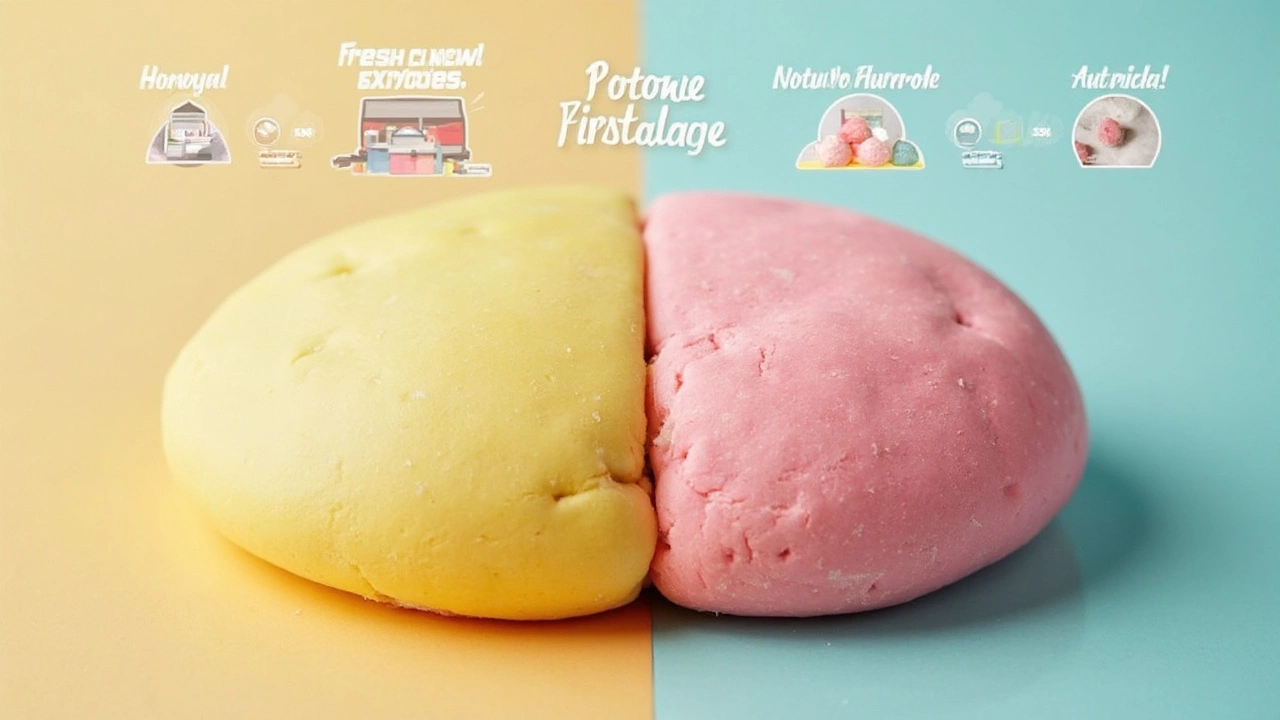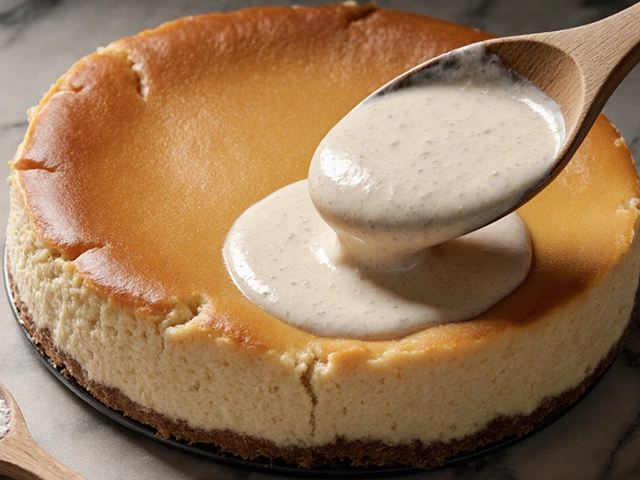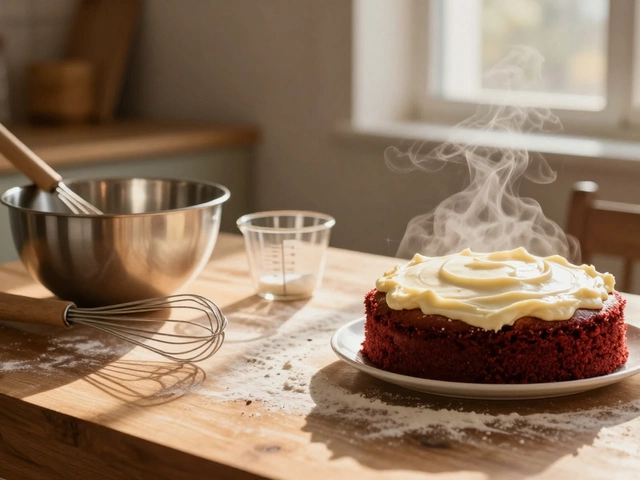
Ever made a batch of fresh pastel dough and wondered just how many days you can stash it in the fridge without risking a weird smell or funky taste? Turns out, pastel dough isn’t as patient as you’d hope—give it more than three days and you’re already rolling the dice. At fridge temps, the flour and fat want to break down, and anything with egg or dairy starts to shift from safe to sketchy pretty quickly.
If you plan to make pastries or those classic fried treats ahead, don’t push your luck past the 72-hour mark. Want it fresh for longer? Wrap it tight in plastic to block out air and keep away those annoying fridge smells. Now, if you spot spots of grey or get a whiff of sour, it’s time to say goodbye. No pastel is worth a stomach ache. You’ll save more dough (literally and figuratively) by being picky about freshness.
- Real Shelf Life in the Fridge
- Red Flags: When to Toss the Dough
- Simple Tricks to Stretch the Freshness
- How This All Relates to Sweet Desserts
Real Shelf Life in the Fridge
Fresh pastel dough is great, but it doesn’t last forever—actually, not even close. If you store it right (think: wrapped up tight and shoved far away from smelly leftovers), homemade pastel dough will hang in there for about 2 to 3 days at a fridge temperature below 40°F (4°C). Any longer, you’re asking for weird textures and possible food risk. It’s mostly a mix of flour, water, and either oil or butter, but when eggs or dairy jump in? That clock starts ticking faster.
“If fresh pastry dough is kept in the refrigerator, ideally it should be used within three days, especially if eggs or dairy are included,” says chef Mauricio Cruz of São Paulo’s Pastel Institute.
Let’s break it down. After even a day or two, the dough starts to dry out and can take on smells lurking in your fridge (nobody wants pastel tasting like onion soup). Bacteria, especially if you’re using eggs or milk, also gets down to business quickly. Commercial pastel doughs last a bit longer because of preservatives, but homemade is just more fragile.
- Keep dough sealed in plastic wrap or in an airtight container. Air is the enemy here.
- Stick to the 3-day rule—if you haven’t used it by then, time to toss it.
- Don’t mix fresh dough with leftovers from previous batches. Bacteria can spread fast.
If you’re the type who likes cold, hard facts, check out this quick cheat sheet:
| Type of Dough | Max Fridge Life | Contains Egg/Dairy? |
|---|---|---|
| Homemade pastel dough | 2-3 days | Usually, yes |
| Store-bought, unopened | Up to 5 days | Sometimes |
| Store-bought, opened | 2-3 days | Sometimes |
So, to keep your pastel dough at its best, focus on freshness and don’t procrastinate. The sooner you fry or bake it, the better—your stomach will thank you.
Red Flags: When to Toss the Dough
You don’t want to mess around with old pastel dough, trust me. Sure, it looks harmless sitting in the fridge, but if you miss the warning signs, you could end up with a ruined batch—or worse, a nasty stomach ache. So, what gives it away?
- Smell: If your pastel dough smells even a little sour or just off, it’s time for the trash. Dough that’s still good will smell fresh or pretty much like nothing at all.
- Color change: Any grey, yellow, or weird dark spots are a solid signal that it’s unsafe.
- Mold: Obvious, but worth repeating—any fuzz or green/black specks means it must go.
- Texture: Sticky, slimy, or overly dry dough has probably passed its prime.
According to food scientist Dr. Carla Minnucci,
“Fresh dough left in the fridge longer than three days is at higher risk for bacterial growth and spoilage. Trust your nose and eyes—when in doubt, throw it out.”
Here’s a quick look at how pastel dough changes day by day in the fridge:
| Days in Fridge | Expected Condition |
|---|---|
| 1 | Fresh, smooth, no smell |
| 2 | Still good, maybe firmer texture |
| 3 | On the edge, check closely |
| 4 or more | Risks: smell, color change, possible mold |
If you spot any warning signals, don’t risk it just to save some dough (see what I did there?). Quick tip: label your container with the date you made the dough so there’s no guessing game in the future. Paying attention to these signs will keep your kitchen safe and your pastel dough delicious every time.

Simple Tricks to Stretch the Freshness
Keeping fresh pastel dough in top shape isn’t hard, but you do need to follow a few solid steps. First, it’s all about the wrapping. Use plastic wrap and press it right against the dough—don't just toss it in a bowl and cover it. This keeps air and moisture out, which means less chance for the dough to dry out or turn gummy. If you’re short on plastic wrap, an airtight container will do, but you really want to cover all surfaces of the dough.
Another biggie: keep your fridge cold enough. The sweet spot is around 4°C (about 39°F). Some fridges run a little warmer in the door or near the front, so stash your dough way in the back—it stays cooler there, and you’ll keep that pastel dough good for up to three days, maybe four if you're lucky.
- Add a date label: When you make the dough, slap a date on the container or bag. That way, you’re not second-guessing later if it’s still safe to use.
- No cross-contamination: Store dough far from raw meats or smelly food like onions or fish. Dough loves to soak up odors, and you don’t want pastel tasting like last night’s leftovers.
- Freeze it: Got more dough than you can use? Freeze the extra. Cut it into small portions, wrap them tight, and freeze for up to three months. Just thaw in the fridge before you’re ready to cook—it’ll be almost as good as fresh.
If you spot condensation inside the wrapping or the dough seems wet, pat it dry gently with a paper towel before using it. These quick moves mean less waste and way tastier snacks later on.
How This All Relates to Sweet Desserts
Alright, here’s where your pastel dough skills cross paths with classic sweet desserts—think tiramisu twists, fried treats with creamy fillings, or even next-level churros. Pastel dough isn’t just about savory snacks; you can totally flip the script and use it in dessert recipes. But the shelf life and freshness you care about basically double in importance when you’re mixing in custards, chocolate, or mascarpone.
Freshness isn’t just about taste here—it’s a big part of food safety, especially with desserts that often use dairy or eggs. That homemade tiramisu-inspired pastel? You do not want soggy, old-tasting dough ruining the mascarpone. If your dough’s even a bit off, it’ll throw off the whole dessert. Here’s some real-world info to keep your sweets safe and tasty:
- When doing fried or baked pastel treats stuffed with sweet fillings, always use dough less than three days old in the fridge—older doughs just don’t hold up and might taste weird.
- If you want that golden, crispy crust (and who doesn’t?), keep the dough sealed well. Any air gets in, and it’ll dry out or get rubbery, which means less crunch and more disappointment.
- If you’re making a big dessert batch, consider splitting your dough. Use what you need, then freeze the rest right away for the next time. Thawed dough actually works better for desserts than dough that sat in the fridge for too long.
Just for a quick side-by-side, here’s how dough storage stacks up for classic sweet treats:
| Sweet Dessert | Dough Shelf Life (Fridge) | Risk When Old |
|---|---|---|
| Tiramisu Pastel | 2-3 days | Soggy texture, off flavor |
| Churro Bites | 3 days | Rubbery crust, weird taste |
| Nutella-Stuffed Pastries | 2 days | Dough splitting, sour smell |
Best hack? Always taste a bit of your dough before rolling out dessert pastries. If it’s got a hint of sour or stale, start over—desserts should be about that wow factor, not a gamble.





